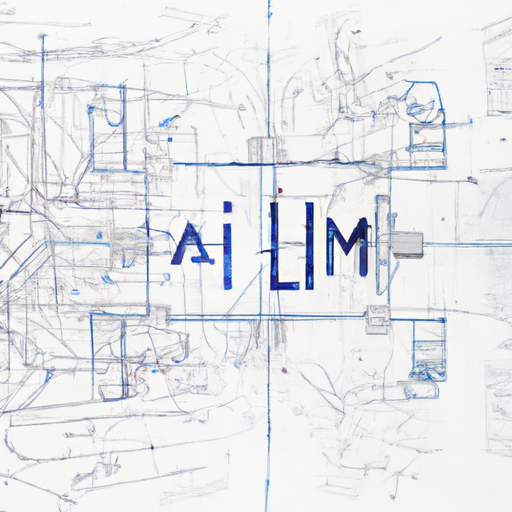In the dynamic landscape of artificial intelligence (AI) and machine learning (ML), the role of chain-of-thought (CoT) as a cognitive mechanism is rapidly gaining recognition. But, how do we effectively showcase this CoT in our models? The answer lies in an often overlooked asset – the Unified Modeling Language (UML). The persistent relevance of UML in the era of digital twins is not to be underestimated. It serves as a potent tool for illustrating complex CoT, thereby enhancing our ability to fine-tune AI and ML models.
This article ventures into the untapped potential of UML in the development of more capable AI and ML models. It explores how harnessing the power of UML in depicting CoT can revitalize intelligence in modern technology. From the creation of digital twins to the fine-tuning of AI and ML models, the indispensable role of UML is brought to the forefront. Join us as we delve into the intriguing world of UML, CoT, AI, and ML – a confluence of concepts that is set to redefine the future of tech.
1. "Harnessing the Power of UML in the Era of Digital Twins: Showcasing Chain-of-Thought"
Harnessing the power of Unified Modeling Language (UML) in today's digital landscape is much like a blacksmith shaping a piece of iron. It's all about fine-tuning and perfecting the process to create a highly functional product, in this case, models that can be incorporated into the latest technology trends such as AI and ML.
Although some may argue that the glory days of UML have passed, the reality is that it remains a potent tool for demonstrating chain-of-thought (COT). This is especially relevant when we consider the rise of digital twins in the realm of artificial intelligence.
Consider a digital twin as a virtual clone of a physical entity. It's a real-time digital replica of a physical device or system. How is this relevant to UML, you might ask? Simply put, the chain-of-thought that UML empowers allows us to structure the intelligence of these digital twins more effectively and efficiently.
Let's look at it this way: the chain-of-thought process in UML acts as the backbone, the underlying structure of our digital twin. It's the framework that allows us to express the digital twin's
2. "Fine-Tuning AI and ML Models: The Untapped Potential of UML and Chain-of-Thought"
In the realm of artificial intelligence (AI) and machine learning (ML), fine-tuning models have emerged as a critical step to ensure optimal performance. Yet, in this digital era of rapid-fire innovation, the methods we use to fine-tune these models can sometimes seem archaic, disconnected from the intellectual rigor of our chain-of-thought (COT).
Enter Unified Modeling Language (UML), a visual language for specifying, constructing, and documenting the artifacts of software systems. Whilst some may wrongly dismiss UML as a relic of a bygone era, it's time to dust off this powerful tool and recognize its untapped potential in the age of AI and ML.
UML, with its ability to represent COT, has the potential to revolutionize the way we fine-tune our AI and ML models. It offers a graphical representation of a system's structural and behavioral features, bringing clarity to complex systems and offering a universal language that transcends cultural and linguistic barriers.
In the context of AI and ML, UML's ability to depict the COT becomes particularly crucial. As we dive deeper into the labyrinth of neural networks and decision
3. "Revitalizing Intelligence in Modern Tech: The Indispensable Role of UML in AI and ML's Development"
The evolution of technology is a journey of constant learning, adapting, and fine-tuning. It's like a composer steadily crafting a symphony, with each note, each chord representing a step towards a revolutionary breakthrough. In this symphony of modern tech, the Unified Modeling Language (UML) plays a pivotal role, especially in the arenas of Artificial Intelligence (AI) and Machine Learning (ML).
UML has been instrumental in delineating the chain-of-thought (COT) in software development, acting as a bridge between human thought processes and the digital logic of machines. This not only makes complex systems more comprehensible but also enables developers to create more capable models. Even in the AI and ML landscapes, this principle holds true.
AI and ML thrive on intelligence, both in terms of data interpretation and decision-making. The intricate algorithms and neural networks at the heart of these technologies need meticulous planning, structuring, and implementation. Here, UML comes into play. It provides an effective and efficient graphical representation of these systems, enabling programmers to visualize, specify, construct, and document artifacts of a software system.
By providing a bird's eye
In conclusion, the relevance of UML (Unified Modeling Language) in today's era of AI, ML, and digital twins cannot be overstated. It is a powerful tool that provides mechanisms to clearly illustrate the chain of thought or COT, a critical element in the development and fine-tuning of intelligent models. By effectively harnessing the potential of UML, we can create a robust framework that enables us to visualize, construct, and document artifacts of a software system.
Moreover, UML's ability to encapsulate COT paves the way for more capable and efficient models. This process of fine-tuning AI and ML models through UML allows for the creation of well-structured, optimized, and intelligent models that are capable of addressing complex tasks and problem-solving.
Furthermore, the integration of UML in the development of digital twins represents a significant leap forward in revitalizing intelligence in modern technology. It not only enhances the functionality and performance of these digital replicas but also fosters a deeper understanding of the systems they represent.
In essence, UML's role in AI and ML's development remains indispensable. It serves as a fundamental tool in bridging the gap between conceptual models and reality, thus ensuring that the future of digital twins, AI, and ML remains bright, dynamic, and full of potential.
